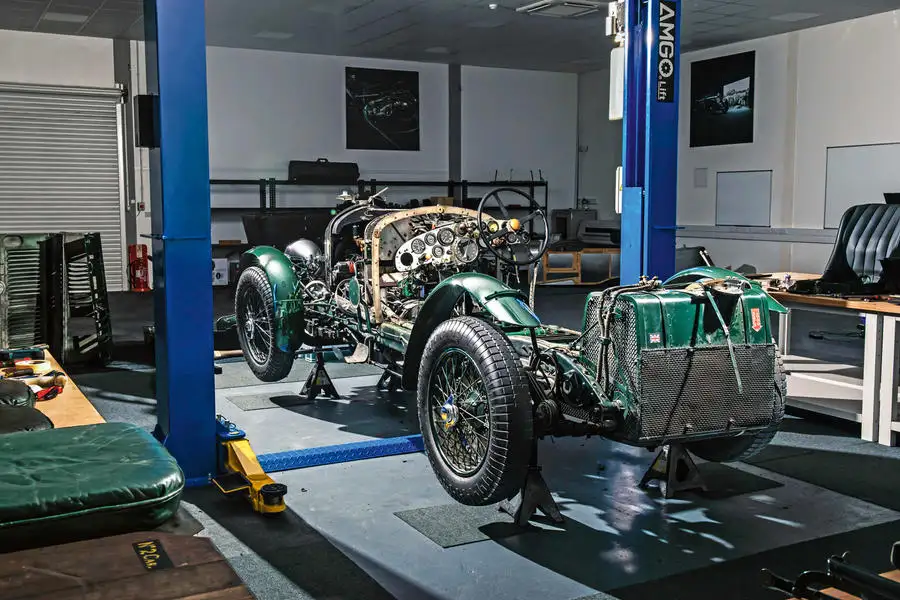Although generally agreed to be the most famous Bentley of all, the 4.5-litre Blower was a model the company’s famous founder couldn’t abide. WO Bentley’s theory was that to make the car go faster you gave it a bigger engine – a theory proved by the fact that the 6.5-litre Speed Six did much better in competition than the Blower. But Birkin, who moved in the same circle as the supercharger designer Amherst Villiers, was keener on the Blower concept (which boosted power from 175bhp to 240bhp). He won the approval of the ailing company’s chairman and backer, Woolf Barnato, against WO’s opinion. The company built 50 Blowers, plus four for Birkin to modify and race, one of which was the No2 Team car in our pictures, still owned by Bentley Motors.
The Blower never won a race in its heyday and only entered 12 events (hence the continuation batch’s size), but Bentley folklore credits the Blower with a key role in a Speed Six’s win at Le Mans in 1930. The tale was that Birkin’s Blower ran so hard from the start that it “exhausted” Rudolf Caracciola’s solitary 7.0-litre Mercedes SSK, the biggest threat to a Bentley victory. Barnato’s Speed Six then took the win. But it’s likely that Birkin so badly wanted to beat Caracciola that he drove his Blower past the limit of reliability. Bentley benefited in any case, taking its fourth successive Le Mans victory.
The Blower continuation project has been based since September at Envisage, the high-tech car creation consultancy on the outskirts of Coventry. The project’s leader is a hugely experienced Mulliner engineer, Glyn Davies, who is using a mystical combination of 2020s digital measuring equipment and his own experienced eye for old cars to decide exactly what the continuation models will be like. Once all digital information has been garnered from No2, operations will return to Mulliner HQ at Crewe, where the 12 new Blowers will be built.

Davies is a Mulliner ‘lifer’ who started as a sheet metal apprentice in the 1970s, working in Crewe’s experimental department where prototypes were made by hand. He later trained as a mechanical engineer and became a Mulliner project leader, usually deployed on difficult, secret and low-volume projects. Until this gig, his greatest achievement was the successful recreation of a one-off 1939 Bentley Corniche saloon concept destroyed during the war, and the rebuilt car played a large part in Bentley’s recent centenary celebrations. Retirement was supposed to follow, but then the Blower project came along.
In theory, producing 12 matching replicas of a pre-war racing car from an authentic original sounds straightforward if you have the skills. Equipped with modern software, you digitise everything using the dismantled original car to decide authentic components. You decide whether existing restoration parts can help (there’s already a lively Bentley restoration industry) and then you start building. But it’s turning out to be much tougher than that.